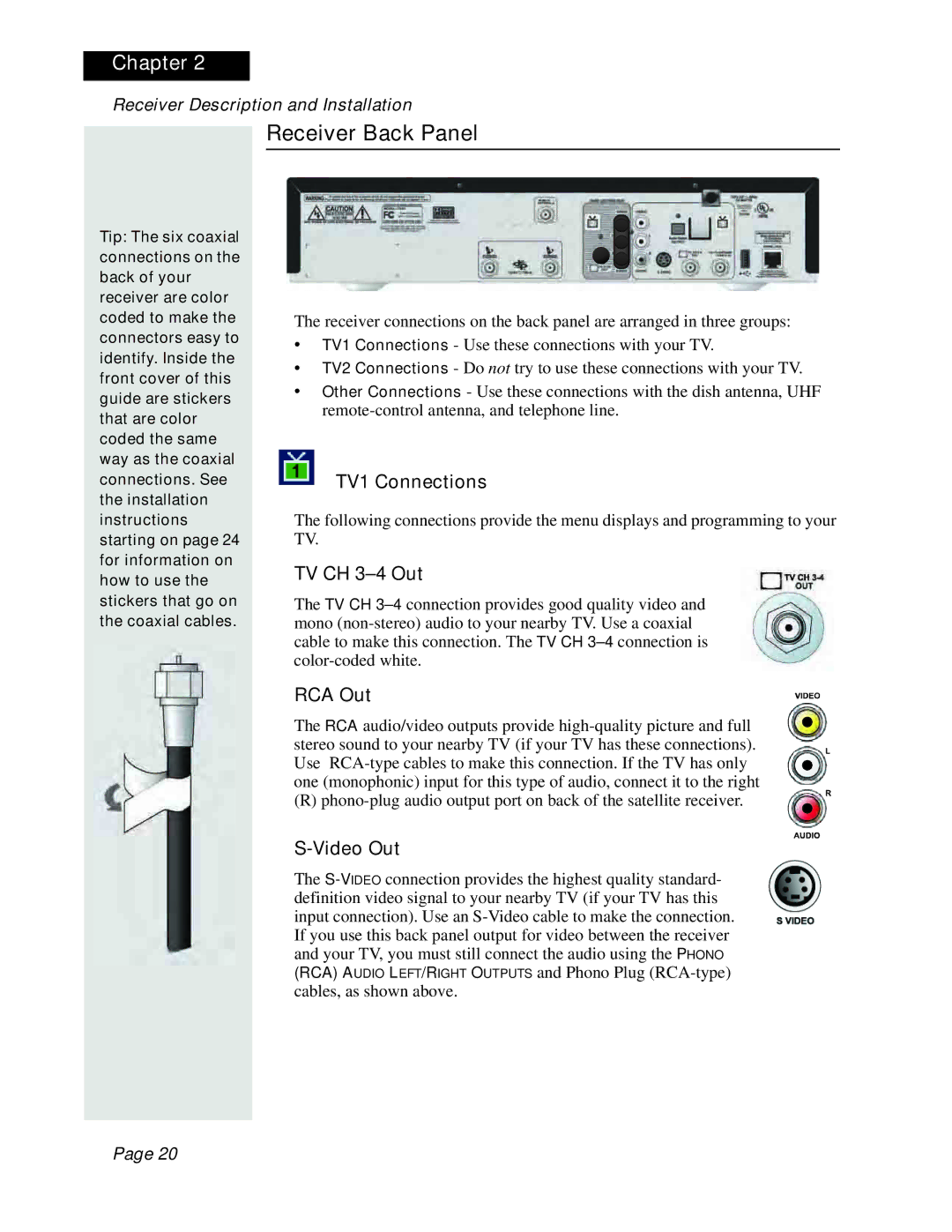
Chapter 2
Receiver Description and Installation
Tip: The six coaxial connections on the back of your receiver are color coded to make the connectors easy to identify. Inside the front cover of this guide are stickers that are color coded the same way as the coaxial connections. See the installation instructions starting on page 24 for information on how to use the stickers that go on the coaxial cables.
Receiver Back Panel
The receiver connections on the back panel are arranged in three groups:
•TV1 Connections - Use these connections with your TV.
•TV2 Connections - Do not try to use these connections with your TV.
•Other Connections - Use these connections with the dish antenna, UHF
TV1 Connections
The following connections provide the menu displays and programming to your TV.
TV CH 3–4 Out
The TV CH
RCA Out
The RCA audio/video outputs provide
(R)
S-Video Out
The
Page 20
